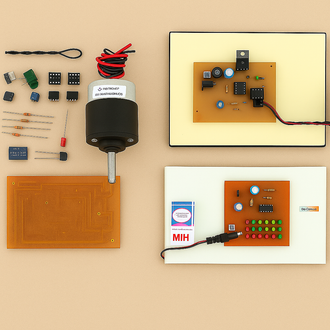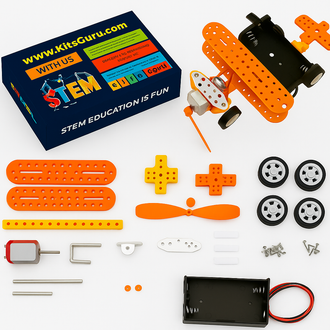
What Are Science Kits: A Hands-On Approach to Learning
- 31 Aug, 2023
Science Kits (STEM Kits): What They Are, Types & Benefits
In a world where technology advances at an unprecedented rate, nurturing a passion for science has become essential. Science kits—often called STEM kits—engage children and adults in the wonders of science through hands-on experiences that spark curiosity, build critical thinking, and deepen understanding across physics, chemistry, biology, electronics, and more.
Table of Contents
- Introduction
- The Power of Hands-On Learning
- What Are Science Kits?
- Types of Science Kits
- Benefits of Using Science Kits
- Promoting Critical Thinking
- Encouraging Curiosity
- Building Practical Skills
- Enhancing Classroom Learning
- Choosing the Right Science Kit
- Science Kits for Different Age Groups
- DIY Science Kits at Home
- Impact on Future Careers
- Science Kits and Inclusivity
- Conclusion
- FAQs
Introduction
Imagine learning physics, chemistry, and biology by doing, not just reading. Science kits revolutionise education by providing tangible, experiment-driven experiences that complement traditional lessons.
The Power of Hands-On Learning
Hands-on learning is highly effective: learners interact with materials, run experiments, and draw conclusions. Science kits make learning active, memorable, and fun.
What Are Science Kits?
Science kits are curated sets of materials, equipment, and instructions for specific experiments or projects—from basic physics to robotics. Step-by-step guides encourage exploration and practical application.
Types of Science Kits
Options span chemistry (safe reactions), astronomy, paleontology, electronics, and more—ensuring every learner finds a kit that matches their interests.
Benefits of Using Science Kits
Promoting Critical Thinking
Kits present challenges that require troubleshooting, encouraging creative, analytical thinking.
Encouraging Curiosity
By asking questions and testing ideas, learners explore the “why” and “how” behind phenomena.
Building Practical Skills
Experiments cultivate measurement, observation, and data collection—skills transferable to real-world contexts.
Enhancing Classroom Learning
Kits add a tangible dimension to theory, bridging abstract concepts with concrete experiences.
Choosing the Right Science Kit
Match kits to age, skill level, and interests. Complexity varies—select an appropriate challenge to keep motivation high.
Science Kits for Different Age Groups
From elementary to adult learners: younger kits emphasise foundations; advanced kits deliver deeper, more complex experiments.
DIY Science Kits at Home
Beyond commercial options, many kits can be replicated using household materials—great for resourceful, customised learning.
Impact on Future Careers
Early engagement with science kits can influence career choices by exposing learners to diverse STEM fields and pathways.
Science Kits and Inclusivity
Kits promote access for all—regardless of gender, background, or ability—breaking barriers and empowering every learner.
Conclusion
Science kits are bridges to the captivating realm of exploration. By combining education with hands-on practice, they spark lifelong curiosity, foster critical thinking, and build practical skills—vital for academic success and navigating today’s complex world.
FAQs
- What age group are science kits suitable for? Kits exist for all ages; choose based on level and interest.
- Can adults benefit from science kits? Absolutely—adults learn and enjoy them as much as kids.
- Are science kits only for home learning? No—great for classrooms, clubs, and workshops too.
- How do kits build skills? Through experimentation that develops problem-solving, observation, and data analysis.
- Are science kits gender-neutral? Yes—designed to be inclusive and accessible to everyone.
















